Article Summary
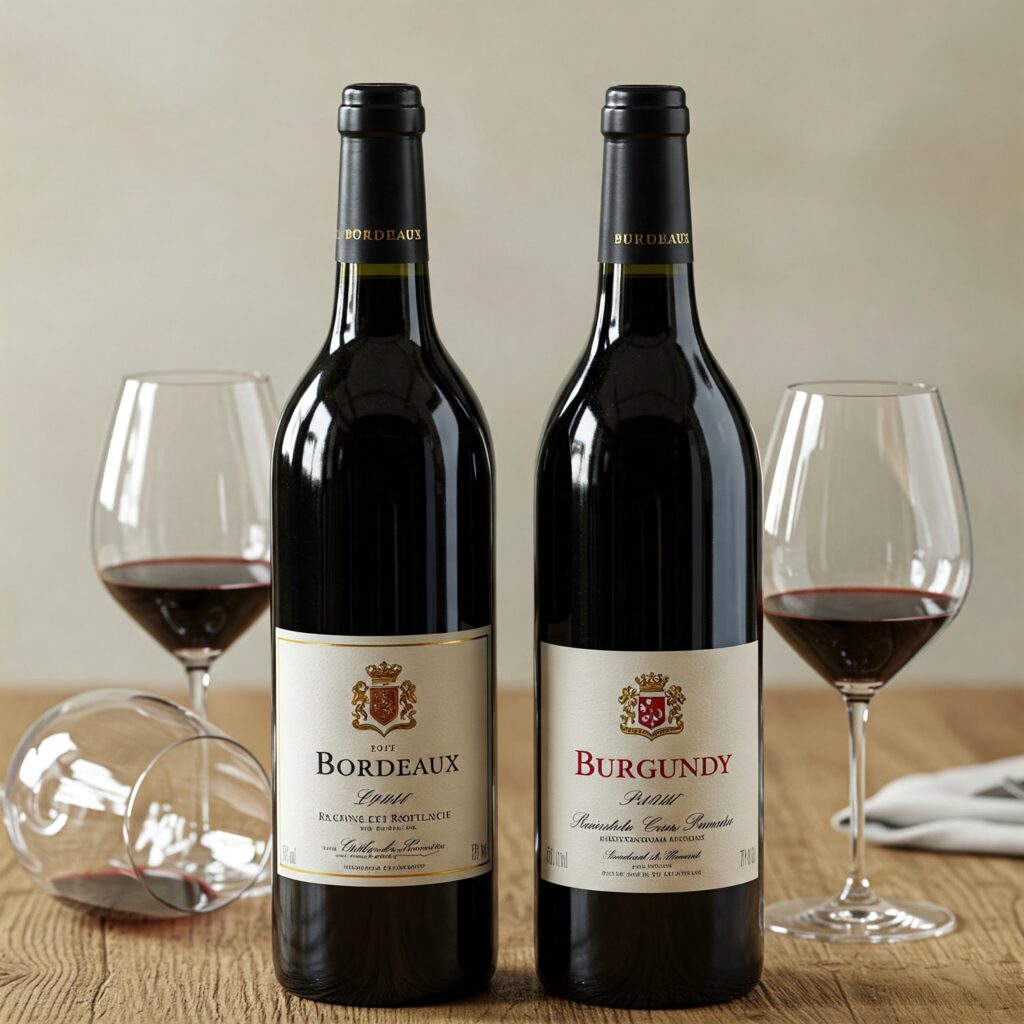
Burgundy vs Bordeaux wine: whats the difference?
When it comes to fine wine, few names evoke as much prestige and passion as Burgundy and Bordeaux. These two legendary French wine regions have shaped the world of viticulture for centuries, each carving out a distinctive identity that continues to captivate oenophiles around the globe. While both regions produce exceptional wines, their approaches to winemaking could not be more different—from the grapes they cultivate to the philosophies that guide their production.
Whether you're a seasoned collector or a curious newcomer to the world of fine wine, understanding the nuances between these iconic regions will enhance your appreciation and enjoyment of their liquid treasures. Join us as we uncork the fascinating distinctions that make Burgundy and Bordeaux unique yet equally compelling destinations for wine lovers.
The rivalry between Burgundy and Bordeaux spans centuries, with each region championing distinct approaches to winemaking. At their core, these differences can be summarized in a few essential contrasts:
Wine Philosophy: Burgundy celebrates terroir above all else, focusing on single vineyards and expressing the pure essence of place through predominantly single-varietal wines. Bordeaux, by contrast, embraces the art of blending multiple grape varieties to create balanced, complex wines that reflect both terroir and human craftsmanship.
Scale of Production: While Bordeaux operates on a grander scale with larger estates producing significant volumes, Burgundy consists of a patchwork of small family domains producing limited quantities of highly sought-after wines.
Wine Structure: Burgundian wines are known for their ethereal elegance, subtlety, and silky textures. Bordeaux wines typically offer more structure, power, and tannic backbone, designed for extended aging.
Classification Systems: Bordeaux follows a château-based classification system established in 1855 that ranks producers, while Burgundy's hierarchical system focuses on classifying specific vineyard plots based on their quality potential.
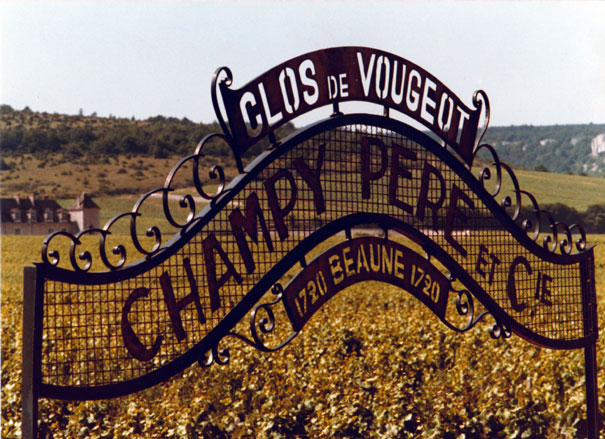
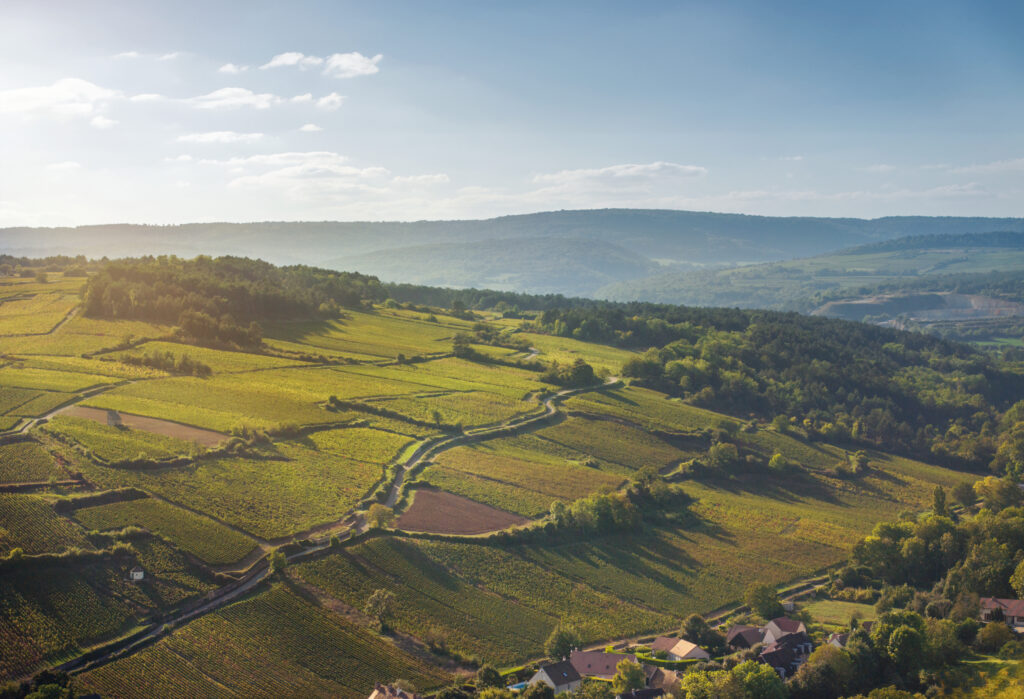
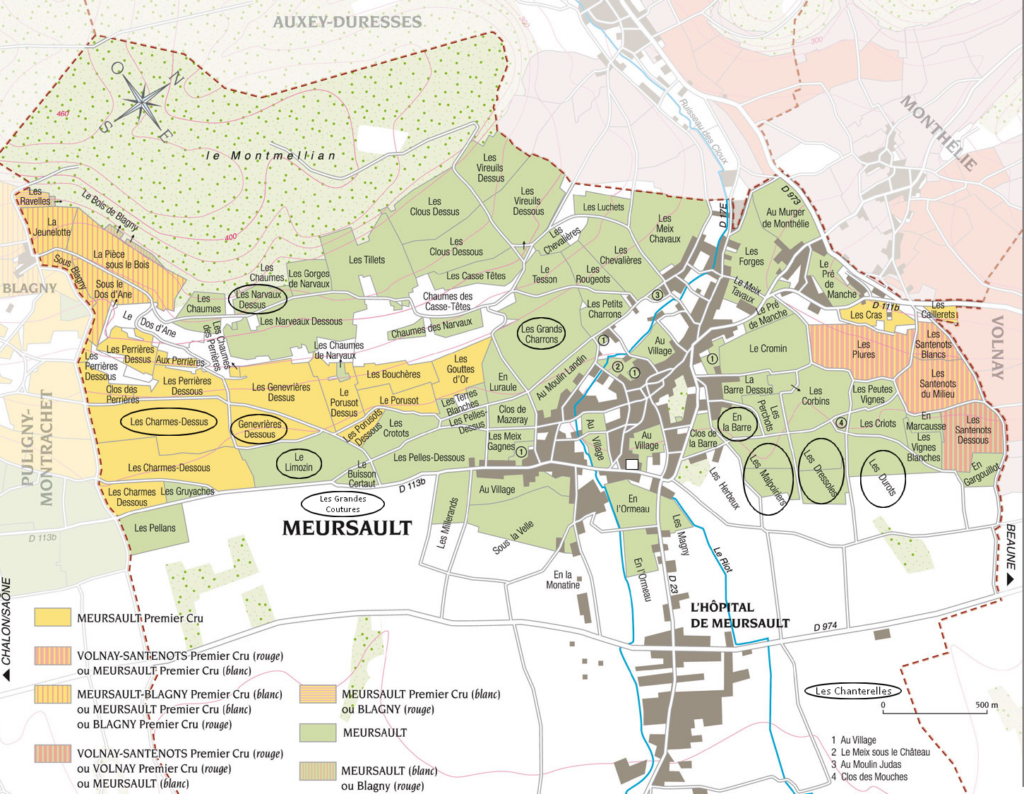
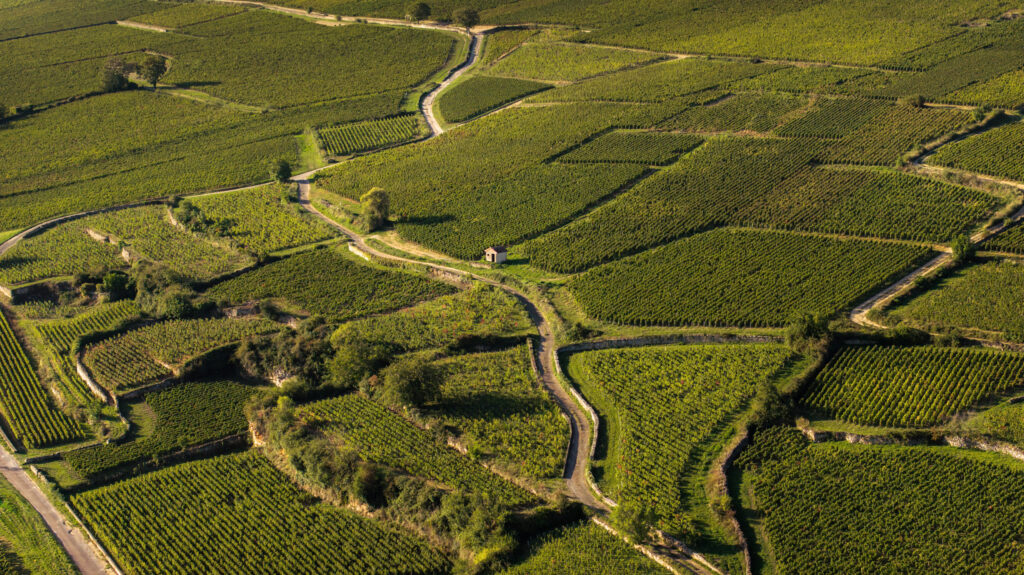
The concept of terroir—that magical combination of soil, climate, topography, and human influence—finds perhaps its purest expression in these two regions, albeit in dramatically different ways.
Burgundy's Terroir: Burgundy's narrow strip of vineyards along the eastern edge of France features a mosaic of microclimates and soil types, primarily limestone and clay in varying proportions. This incredible geological diversity can change dramatically within meters, explaining why adjacent vineyards often produce remarkably different wines. Burgundy's continental climate brings cold winters and warm summers, with spring frost presenting a constant threat to vine development.
The region's winemaking philosophy centers on allowing each tiny vineyard plot to express its distinctive character through minimal intervention. This meticulous focus on site-specificity has culminated in the identification of hundreds of individual climats (named vineyard sites), each with its own personality.
Bordeaux's Terroir: Spread across a much larger area in southwestern France, Bordeaux benefits from a maritime climate moderated by the Atlantic Ocean and the Gironde Estuary, which divides the region into Left Bank and Right Bank. The Left Bank features well-drained gravel soils perfect for Cabernet Sauvignon, while the Right Bank's clay and limestone soils favor Merlot.
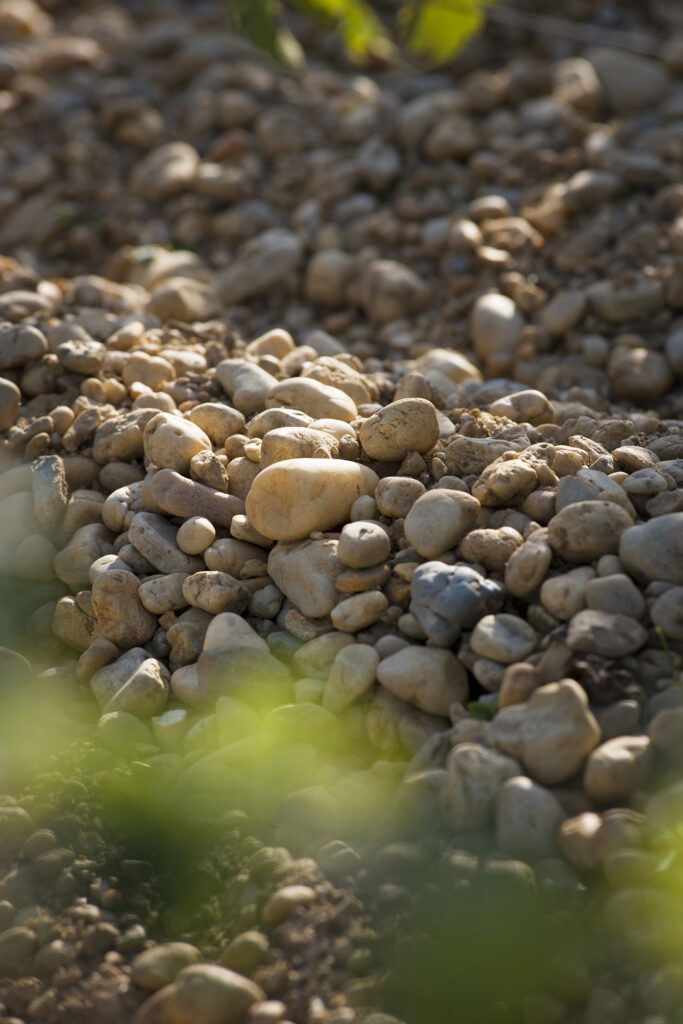
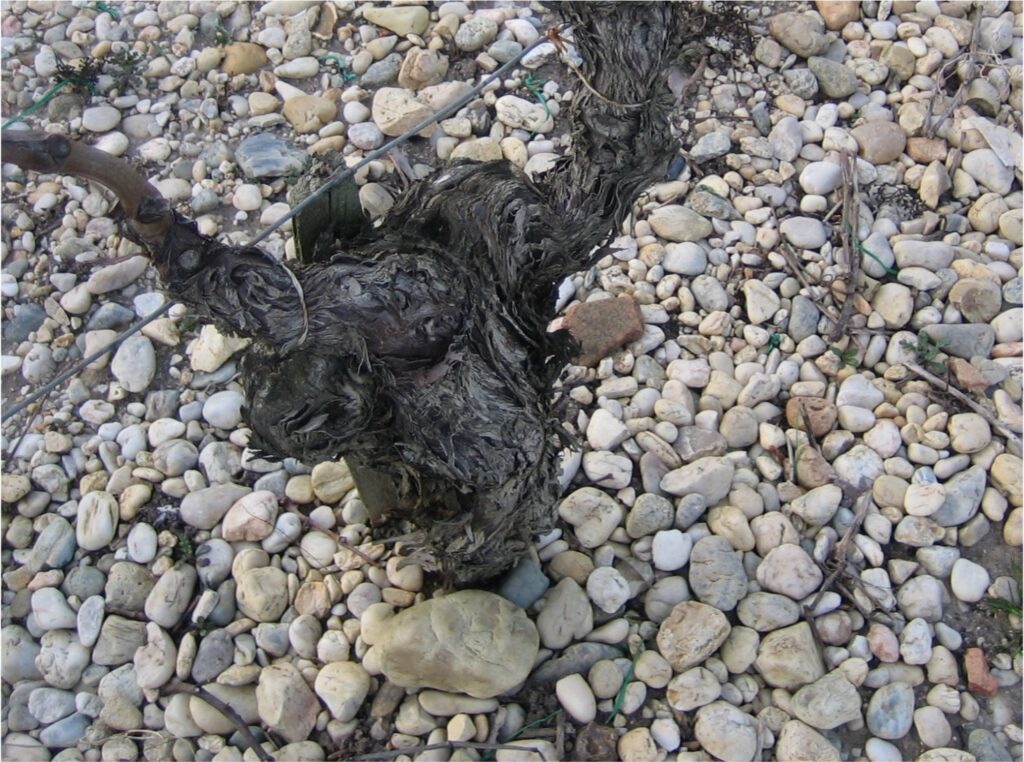
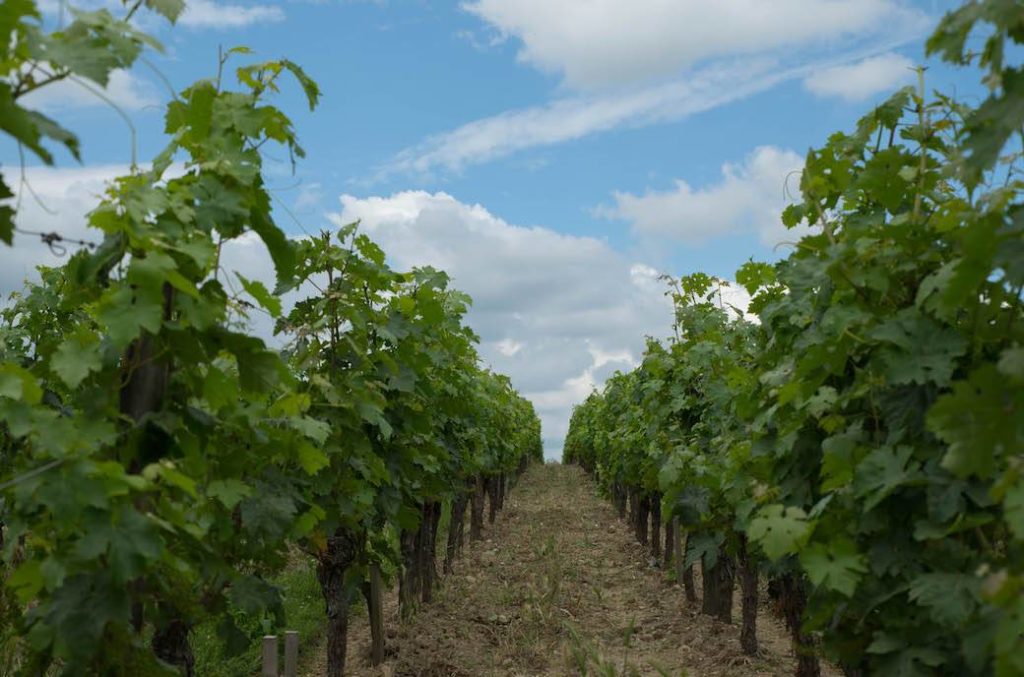
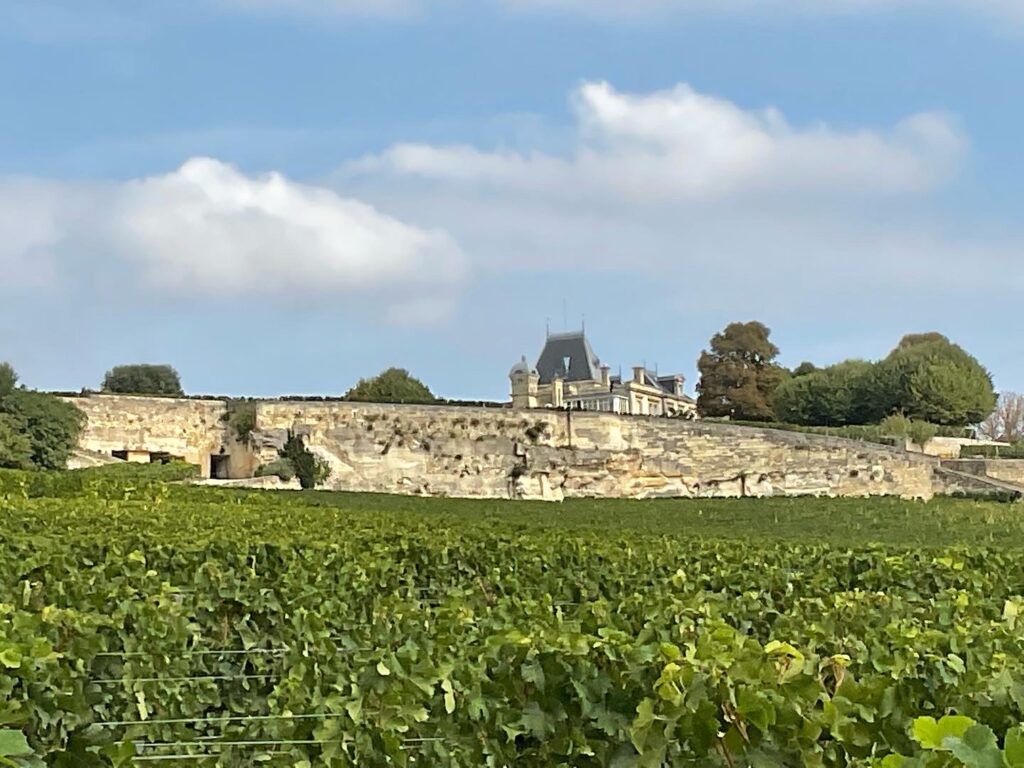
Rather than the extreme fragmentation seen in Burgundy, Bordeaux's terroir expression comes through larger appellations with more consistent characteristics. The region's château system, where estates control substantial vineyard holdings, allows for more consistent production levels and enables winemakers to craft balanced blends by selecting from various parcels.
Perhaps no contrast between these regions is more striking than their approach to grape varieties.
Burgundy's Grapes: Burgundy embraces radical simplicity, focusing almost exclusively on two grape varieties:
- Pinot Noir: The temperamental red grape that produces ethereal, silky wines with red fruit flavors, floral notes, and an ability to express terroir with unparalleled transparency.
- Chardonnay: The versatile white grape capable of producing everything from crisp, mineral-driven Chablis to rich, opulent wines from the Côte de Beaune.
This laser focus on two varieties allows Burgundian winemakers to become true specialists, dedicating generations to understanding how these grapes express each specific vineyard site.
Bordeaux's Grapes: Bordeaux thrives on the art of blending, primarily using five key varieties for red wines:
- Cabernet Sauvignon: Providing structure, tannin, and aging potential, particularly dominating Left Bank blends.
- Merlot: Contributing roundness, plushness, and accessibility, forming the backbone of Right Bank wines.
- Cabernet Franc: Adding aromatic complexity, finesse, and sometimes herbaceous notes.
- Petit Verdot: Bringing color, tannin, and spice notes in small proportions.
- Malbec: Historically important but now used sparingly for color and fruit.
For white wines, Bordeaux primarily uses:
- Sauvignon Blanc: Contributing freshness, acidity, and aromatic lift.
- Sémillon: Providing body, texture, and honeyed richness, especially in sweet Sauternes.
This diversity of grape varieties gives Bordeaux winemakers a broader palette from which to craft their wines, allowing them to adapt to vintage variations by adjusting their blends.
The contrast between these regions extends deeply into their production philosophies and structures.
Burgundy's production landscape reflects its historical fragmentation under Napoleonic inheritance laws, where vineyards were continually divided among heirs. Today, most Burgundian producers are small, family-owned operations, many farming just a few hectares spread across multiple vineyards. This small-scale approach necessitates hands-on viticulture and encourages meticulous attention to detail.
Production quantities are inherently limited, creating the scarcity that drives Burgundy's often astronomical prices. The winemaking typically emphasizes minimal intervention to preserve site expression, with judicious use of oak to complement rather than overpower the wine's natural character.
Bordeaux operates on a significantly larger scale, with estates often controlling dozens or even hundreds of hectares. The château system, where a single entity owns and manages substantial contiguous vineyards, allows for greater economies of scale and more consistent production volumes. Large, temperature-controlled cellars enable precise fermentation and aging, while dedicated sales teams manage global distribution networks.
This larger scale has historically made Bordeaux more accessible to consumers, though top-tier châteaux now command prices rivaling or exceeding Burgundy's finest offerings. The region's greater production capacity has also enabled it to establish a strong global presence, with Bordeaux often serving as many wine enthusiasts' introduction to fine French wine.
The classification systems employed by these regions reveal fundamentally different philosophies about what constitutes wine quality.
Bordeaux's Classification: Bordeaux's most famous classification system, established for the 1855 Paris Exhibition, ranked châteaux from the Médoc region into five growths or "crus" based primarily on their market prices and reputations at that time. This producer-based system essentially classified the estates themselves rather than specific vineyard sites. With few exceptions (most notably Château Mouton Rothschild's promotion to First Growth in 1973), this classification has remained largely unchanged for over 165 years.
Other Bordeaux sub-regions like Saint-Émilion have established their own classification systems with periodic revisions. These classifications have become powerful marketing tools that significantly influence wine pricing and global perception.
Burgundy's Classification: Burgundy's four-tiered hierarchy, formalized in the mid-20th century but based on centuries of observation, focuses entirely on specific vineyard sites rather than producers:
1. Grand Cru: The pinnacle of quality, representing just 2% of production from exceptionally situated vineyards.
2. Premier Cru: Outstanding vineyards comprising about 12% of production.
3. Village: Wines from specific communes, making up approximately 36% of production.
4. Regional: Basic wines from the broader Burgundy region.
This means that multiple producers can make wine from the same classified vineyard, with quality varying based on each winemaker's skill and approach. The emphasis remains firmly on the land itself rather than who owns it, reflecting Burgundy's belief that great wine begins with great terroir.
While both regions produce exceptional wines, their sensory profiles differ dramatically, offering wine lovers distinct pleasures.
Burgundian wines are often described as ethereal and sensual, prized for their aromatic complexity, silky textures, and ability to transmit terroir with remarkable transparency. Their moderate alcohol levels and balanced acidity make them exceptionally food-friendly and approachable in their youth, though the finest examples can age gracefully for decades.
Bordeaux wines, particularly from top châteaux, are typically more structured and powerful, with firm tannins that require time to soften. They often display greater uniformity within their appellations but can show tremendous complexity as they age, gradually revealing layers of secondary and tertiary aromas beyond their initial fruit-forward profiles.
Both regions produce wines with exceptional aging potential, though through different mechanisms. Burgundy's longevity stems from its perfect balance and concentrated fruit essence, while Bordeaux's ageability comes from its structured tannins and higher acidity.
Red Burgundy (Pinot Noir) offers an intoxicating aromatic profile that can include red cherries, wild strawberries, raspberries, and cranberries in youth, developing more complex notes of forest floor, mushrooms, game, and dried flowers with age. The mouthfeel is typically silky and refined, with bright acidity and fine-grained tannins that provide structure without aggressive grip.
Regional differences are pronounced, with Côte de Nuits generally producing more structured, powerful wines, and Côte de Beaune offering more aromatic, delicate expressions. Within these sub-regions, each village and vineyard imparts its distinctive character—Gevrey-Chambertin's wines tend toward muscularity and earthiness, while Chambolle-Musigny offers ethereal perfume and silky textures.
White Burgundy (Chardonnay) ranges dramatically in style from the steely, mineral-driven wines of Chablis to the rich, opulent expressions from Meursault and Puligny-Montrachet. Aroma profiles can include citrus fruits, green apples, and white flowers in cooler regions, trending toward riper stone fruits, honey, and hazelnut notes in warmer sites. Oak influence varies widely, from the unoaked purity of Chablis to the judicious barrel aging of Côte de Beaune whites.
The finest white Burgundies combine richness with precision, offering complex interplays between fruit intensity, mineral tension, and textural depth. As they age, they develop captivating notes of brioche, mushroom, and beeswax while maintaining vibrant acidity.
Red Bordeaux displays distinct characteristics depending on its bank of origin and blend composition. Left Bank wines, dominated by Cabernet Sauvignon, typically show firmer structure and notes of blackcurrant, cedar, graphite, and tobacco. Right Bank wines, led by Merlot, offer more immediate plushness with plum, chocolate, and truffle aromas.
Young Bordeaux often presents robust tannins and primary fruit flavors that require time to integrate and develop. With proper aging, these wines evolve magnificently, developing complex bouquets of leather, cigar box, dried fruits, and earthy undertones while maintaining remarkable freshness. The best examples can improve for decades, sometimes a century or more.
White Bordeaux, comprising primarily Sauvignon Blanc and Sémillon, can range from crisp, herbaceous styles to rich, honeyed expressions, particularly in sweet Sauternes. Dry whites offer citrus, gooseberry, and sometimes tropical fruit notes, often with subtle smokiness from oak aging. Sweet Bordeaux presents a luxurious profile of apricot, honey, marmalade, and botrytis-induced complexity.
Selecting between these two great regions often comes down to personal preference and the specific occasion:
Choose Burgundy if you:
- Appreciate subtlety, elegance, and nuance over power
- Enjoy wines that express a specific place with minimal winemaker intervention
- Prefer single-varietal wines that showcase the pure essence of Pinot Noir or Chardonnay
- Are seeking wines with silky textures and ethereal aromatics
Choose Bordeaux if you:
- Prefer more structured, powerful wines with firm tannins
- Appreciate the artistry of blending multiple grape varieties
- Enjoy wines that develop slowly and reward patience
- Are looking for more consistent styles within price categories
Of course, the true wine lover need not choose exclusively between these regions—each offers unique pleasures that complement rather than compete with one another.
Both regions produce exceptionally food-friendly wines, though their ideal pairings differ based on their inherent characteristics.
Burgundy's Food Affinities: The bright acidity and moderate tannins of red Burgundy make these wines remarkably versatile companions at the table. They pair beautifully with poultry (the classic coq au vin), game birds, mushroom dishes, and salmon. Their elegance complements rather than overwhelms delicate flavors.
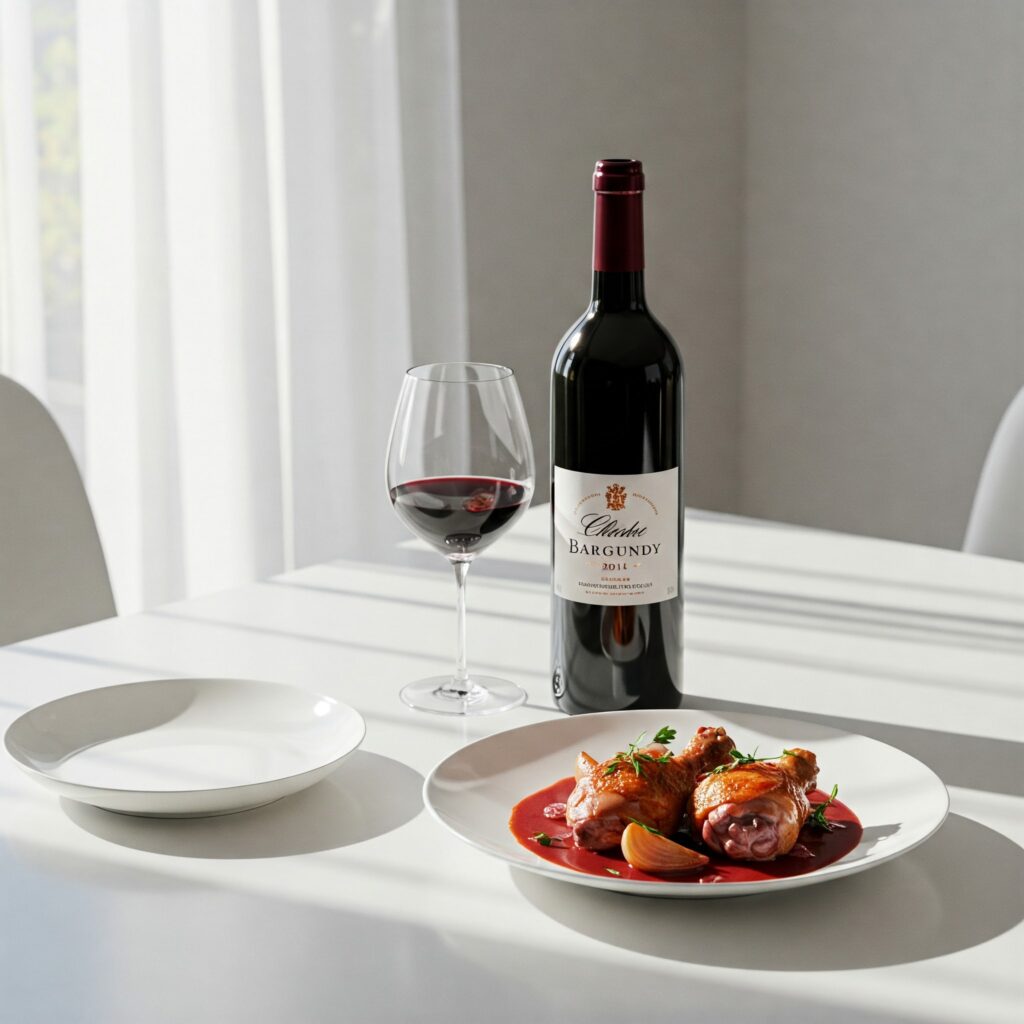
White Burgundy shines alongside seafood, from the classic pairing of Chablis with oysters to richer whites that complement lobster and creamy sauces. The wines' combination of acidity and body makes them ideal partners for a wide range of cuisines, from traditional French to modern Asian fusion.
Bordeaux's Food Affinities: Red Bordeaux's structure and robust tannins call for proteins and fats that can stand up to its powerful profile. Classic pairings include lamb, beef (particularly aged steaks), venison, and hard cheeses. The wines' firm structure helps cut through rich, fatty dishes.
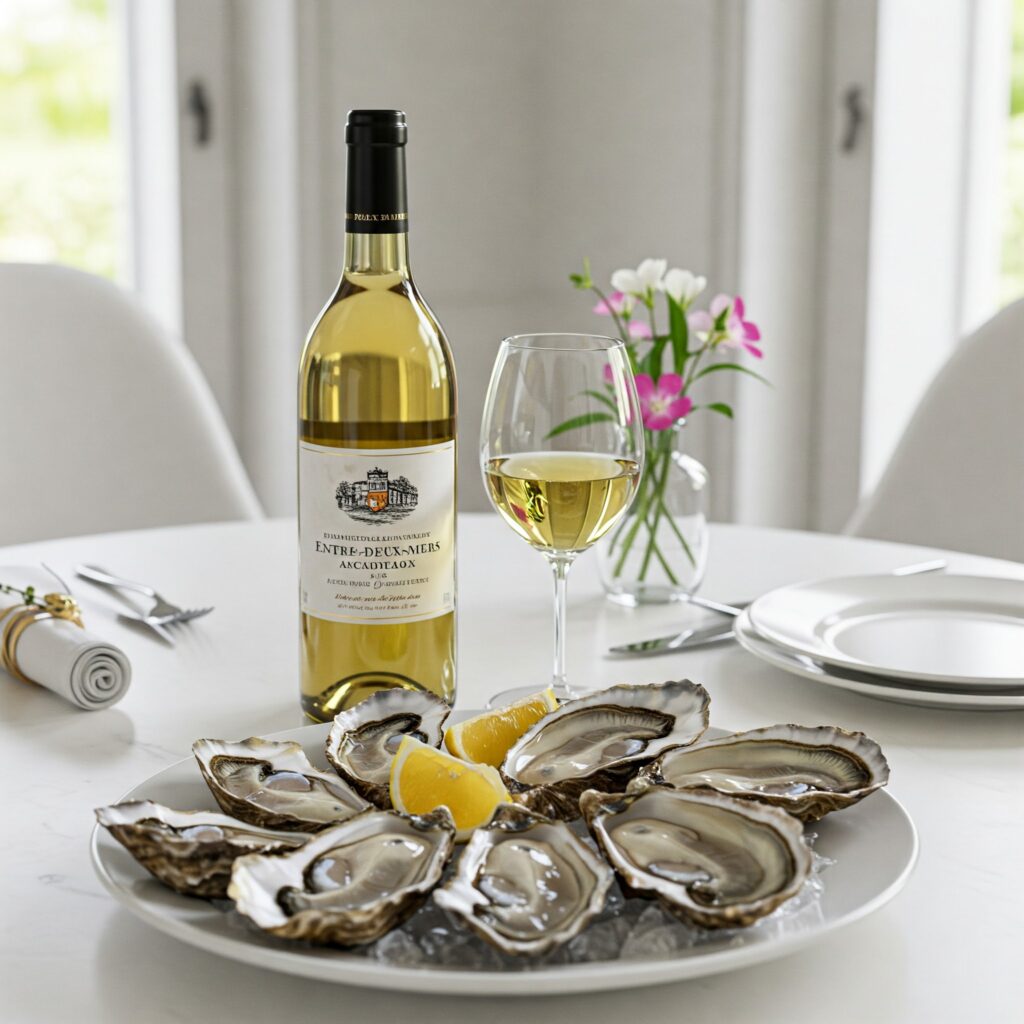
White Bordeaux pairs wonderfully with seafood, particularly when prepared with herbs or in butter sauces. Sweet Sauternes creates magical combinations with foie gras, blue cheeses like Roquefort, and fruit-based desserts. Keep it local with oysters coming from the bay of Arcachon and an crisp Entre-deux-Mers white wine.
Visiting these regions offers distinct yet equally rewarding experiences for the wine traveler, each reflecting the character of their wines and traditions.
Burgundy welcomes visitors with a tapestry of picturesque villages, ancient stone walls, and a palpable sense of history etched into the landscape. The region's charm lies in its intimate scale and refined aesthetic, with narrow country roads winding through the famous Côte d'Or ("Golden Slope") that houses some of the world's most coveted vineyard land.
A typical Burgundy visit centers around small, family-run domaines where tastings often take place in centuries-old cellars with the winemakers themselves. These boutique experiences offer rare insights into traditional winemaking methods and the meticulous attention to detail that defines Burgundian viticulture.
The medieval town of Beaune, with its iconic Hospices de Beaune and vibrant Saturday market, serves as the region's cultural heart. Nearby villages like Gevrey-Chambertin, Vosne-Romanée, and Puligny-Montrachet—names revered by wine lovers worldwide—invite leisurely exploration with their timeless stone buildings and surrounding vineyards.
Dining in Burgundy emphasizes local, seasonal ingredients prepared with classic techniques that highlight rather than overwhelm the region's refined wines. From casual bistros serving perfect coq au vin to Michelin-starred establishments offering contemporary interpretations of Burgundian cuisine, the food scene complements the wine culture perfectly.
Bordeaux offers a more majestic wine tourism experience, centered around impressive châteaux that dot the landscape like architectural jewels. These iconic estates, project the power and global influence that has defined Bordeaux for centuries.
Visits to premier Bordeaux estates often include tours of state-of-the-art winemaking facilities, historic barrel rooms, and carefully curated tasting experiences that showcase vertical vintages. The scale is grander, the presentation more polished, reflecting Bordeaux's long history of international trade and sophisticated marketing. Bordeaux has been receiving visitors far longer than Burgundy and their hospitality sections are well oiled machines today.
The city of Bordeaux itself has undergone a remarkable renaissance in recent decades, transforming from a somewhat sleepy port into a vibrant cultural destination. Its UNESCO-listed center features elegant 18th-century architecture, world-class museums, and a sophisticated dining scene that rivals Paris. The spectacular La Cité du Vin wine museum offers an immersive introduction to wine culture from around the world. With their state of the art tram system, getting around the town is simple. Bicycles can be rented and dropped off anywhere in town and walking around the center is a very safe option.
The surrounding wine regions, from the prestigious Médoc peninsula with its powerful Cabernet-based wines to the charming medieval town of Saint-Émilion with its limestone caves and cobblestone streets, provide diverse experiences for visitors. Each wine region takes a minimun of 45 minutes to an hour to reach from Bordeaux city center. Luxury accommodations, including châteaux-turned-hotels and bed and breakfasts, offer opulent bases for exploring this prestigious wine region.
At Decanter Tours, we understand that truly experiencing these legendary wine regions requires insider knowledge and exclusive access that goes beyond standard tourist routes. Our bespoke wine journeys in Burgundy and Bordeaux are crafted to reveal the soul of these regions through immersive, authentic experiences.
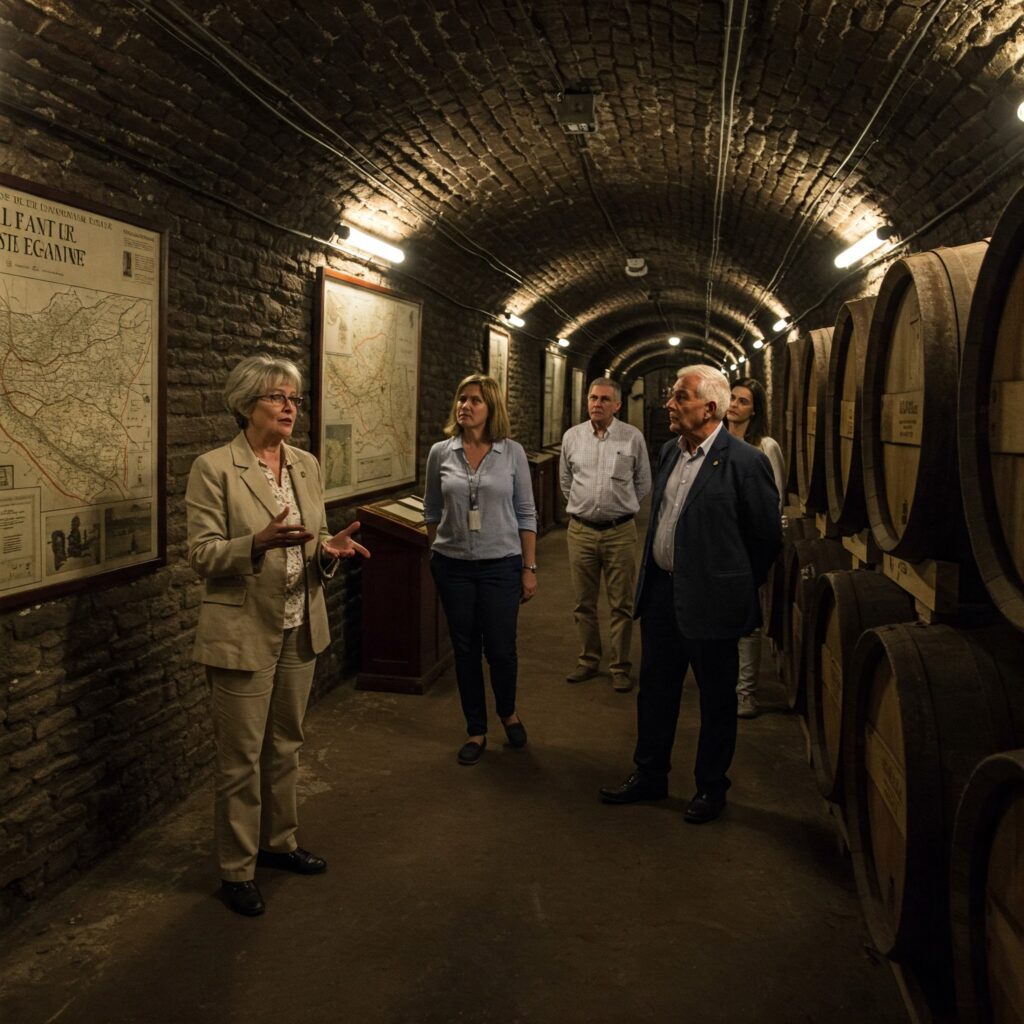
Our deep-rooted relationships with prestigious domains and châteaux open doors typically closed to the public, allowing our guests to taste rare vintages and meet the visionaries behind the wines. In Burgundy, this might mean a private tasting with a fifth-generation winemaker in their family cellar or a private wine and war focused visit: explore the historic cellars connected to the Hospices de Beaune via secret tunnels, once used by owners seeking refuge during WWII.
In Bordeaux, we provide unprecedented access to classified growth châteaux, including behind-the-scenes tours of their state-of-the-art facilities and vertical tastings of exceptional vintages, wine and food pairings and comparative tastings. Our expertly guided explorations of both regions balance iconic estates with hidden gems, ensuring a comprehensive understanding of each region's unique character.
Decanter Tours' luxury experiences extend beyond wine to encompass the finest regional gastronomy, from intimate dinners at Michelin-starred restaurants to cooking classes with celebrated local chefs. Our carefully selected accommodations—whether boutique hotels in historic Beaune or luxurious château stays in Bordeaux—provide the perfect complement to days spent exploring vineyards.
Most importantly, our knowledgeable guides bring these experiences to life with contextual insights that deepen your appreciation of every wine you taste and every landscape you traverse. Whether you're a seasoned collector or an enthusiastic newcomer, Decanter Tours crafts journeys that will forever enhance your understanding and enjoyment of these incomparable wine regions.
Contact us today for your Bordeaux to Burgundy experience.
This age-old debate has no definitive answer, as "better" depends entirely on personal preference. Burgundy produces ethereal, terroir-expressive Pinot Noir wines valued for their aromatic complexity and silky textures. Bordeaux creates more structured, powerful blends (primarily Cabernet Sauvignon and Merlot) prized for their aging potential and consistent quality. Rather than declaring one superior, wine enthusiasts should explore both regions to discover which style resonates more with their individual palate.
While both regions produce wines across various price points, Burgundy's top wines have generally reached higher price levels in recent years due to extremely limited production and growing global demand. The fragmented nature of Burgundy's vineyards, where top producers might make just a few barrels of their finest wines, creates scarcity that drives prices upward. Bordeaux produces larger quantities, even of its most prestigious wines, though First Growth Bordeaux and other top châteaux still command very significant prices. For everyday drinking, both regions offer excellent options at more accessible price points through lesser-known producers and entry-level appellations.
While geographically separated by about 500 kilometers (310 miles), it is certainly possible to experience both Burgundy and Bordeaux in a single trip with proper planning. A high-speed train connects Paris to Dijon (Burgundy) in about 1.5 hours and Paris to Bordeaux in about 2 hours. Alternatively, a direct flight from Lyon (near Burgundy) to Bordeaux takes approximately one hour. Decanter Tours specializes in creating seamless multi-region itineraries that maximize your time in the vineyards rather than in transit, allowing you to compare and contrast these iconic wine destinations in a single luxurious journey. We recommend allowing at least three days in each region to truly absorb their distinctive characters and experience their diverse appellations.

Experience the finest private wine tours in Bordeaux and beyond. With over 20 years of expertise, we craft tailor-made wine journeys to iconic regions like Médoc, Saint-Émilion, Burgundy, and Champagne. Explore exclusive chateaux with expert guides and seamless planning for a truly unforgettable experience.